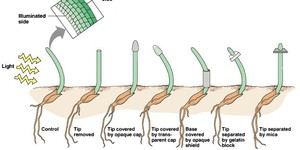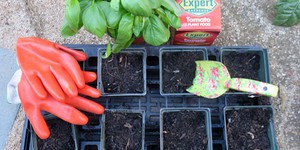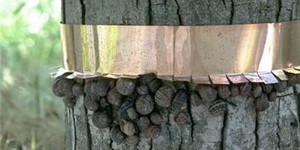Others Like “How Vines Find Their Spines: Thigmotropism in Morning Glory Tendrils” (top 20 results)
|
Plants move—not very quickly compared to animals, but they do move. Their roots grow downward in response to gravity, and their stems grow upward toward the Sun. In this plant biology science fair project, you will investigate how young plants respond through movement to light.
Read more
Plants need nitrogen to grow healthy stems and leaves. Although nitrogen is the most abundant element in the air we breathe, that form of nitrogen cannot be used by plants. Nitrogen contained in fertilizer, on the other hand, is readily taken up by plants. In this experiment, you will compare plants grown without nitrogen fertilizer to plants grown with nitrogen fertilizer.
Read more
As we humans zip from place to place, we often forget to stop and smell the roses. Compared to our fast-paced lifestyle, plants seem rooted to the spot. Don't be deceived by appearances however, plants are on the move! This experiment will investigate the stimulus/response relationship in plants and prove that plants can move up and down in response to gravity.
Read more
What is the first thing you do when you wake up on a cold, frosty morning? Snuggle down deeper under the covers? Animals, like puppies and piglets, do not like being cold either, but they do not have hands or blankets to wrap themselves up. So when animals get chilled, they change their behavior and do things like huddle—they curl up close to other animals. In this mammalian biology science fair project, you will see just how much huddling can help reduce heat loss.
Read more
If you have a garden, you probably know about snails (or their shell-less relatives, slugs). You may even be looking for a good way to keep them from getting into your garden and eating up the results of all your hard work. In this science project, you will take a scientific look at one method of discouraging this garden pest.
Read more
Do you know what plants need to grow? Sure, they need soil, water, and sunshine.
Everyone knows that. But here's a secret: they also need nitrogen. Plants use nitrogen to make DNA in their cells and
the proteins that lead to healthy stems and leaves. The problem is, although the Earth's
atmosphere is made up of 78% nitrogen, the form of nitrogen found in the atmosphere cannot be used by plants.
So how do plants get their nitrogen? Either through nitrogen deposits in the soil, or through…
Read more
Farmers face a variety of challenges in their efforts to grow crops. One of the chief challenges is the presence of unwanted plants (weeds) that compete with the crop plants for water, nutrients, and light. If the weeds are not suppressed, they can reduce or completely eliminate the amount of food derived from the crop at harvest. In this biotechnology and plant science fair project, you will simulate the competition between crop plants and weeds, and determine whether the use of an herbicide,…
Read more
Here is a riddle for you: what kind of rock grows? The answer is: rock candy! This delicious candy is actually crystallized sugar and you can "grow" it from a sugar-water solution. In this science fair project you'll learn how to grow your very own rock candy and determine if using seed crystals changes the growth rate of your sugar crystals.
Read more
Plants have evolved many clever mechanisms to ensure that their seeds will wait for appropriate conditions before sprouting. Some may only germinate after a fire, others only after going through a cold spell. This project explores one important variable among many that determine the ideal conditions for seed germination.
Read more
Did you know that apple trees do not "breed true"? This means that if you plant seeds from an apple, say a Granny Smith, you will get apple trees, but they will make apples that are actually different than Granny Smiths. So how do farmers produce new Granny Smith trees? They use a method called vegetative propagation. For instance, they may cut a branch off of a tree that grows Granny Smith apples and attach the branch onto a different tree trunk. This method of making new trees is called…
Read more
|
Explore Our Science Videos
Light-Tracking Bristlebot Instructions | Science Project
DIY Mini Drone Part 6: Motion Control
How to Make Magnetic Slime











